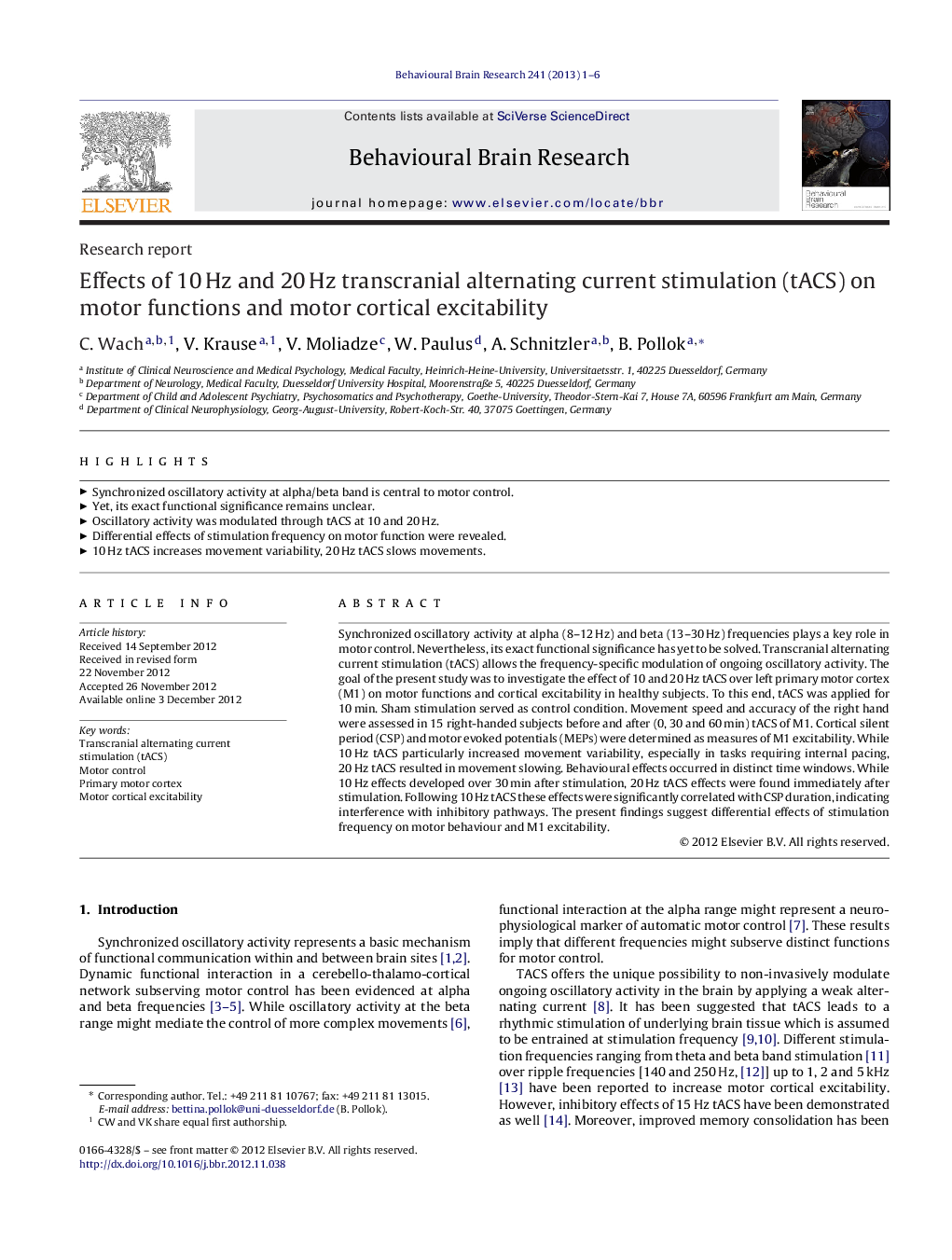| کد مقاله | کد نشریه | سال انتشار | مقاله انگلیسی | نسخه تمام متن |
|---|---|---|---|---|
| 6259173 | 1612991 | 2013 | 6 صفحه PDF | دانلود رایگان |

Synchronized oscillatory activity at alpha (8-12Â Hz) and beta (13-30Â Hz) frequencies plays a key role in motor control. Nevertheless, its exact functional significance has yet to be solved. Transcranial alternating current stimulation (tACS) allows the frequency-specific modulation of ongoing oscillatory activity. The goal of the present study was to investigate the effect of 10 and 20Â Hz tACS over left primary motor cortex (M1) on motor functions and cortical excitability in healthy subjects. To this end, tACS was applied for 10Â min. Sham stimulation served as control condition. Movement speed and accuracy of the right hand were assessed in 15 right-handed subjects before and after (0, 30 and 60Â min) tACS of M1. Cortical silent period (CSP) and motor evoked potentials (MEPs) were determined as measures of M1 excitability. While 10Â Hz tACS particularly increased movement variability, especially in tasks requiring internal pacing, 20Â Hz tACS resulted in movement slowing. Behavioural effects occurred in distinct time windows. While 10Â Hz effects developed over 30Â min after stimulation, 20Â Hz tACS effects were found immediately after stimulation. Following 10Â Hz tACS these effects were significantly correlated with CSP duration, indicating interference with inhibitory pathways. The present findings suggest differential effects of stimulation frequency on motor behaviour and M1 excitability.
⺠Synchronized oscillatory activity at alpha/beta band is central to motor control. ⺠Yet, its exact functional significance remains unclear. ⺠Oscillatory activity was modulated through tACS at 10 and 20 Hz. ⺠Differential effects of stimulation frequency on motor function were revealed. ⺠10 Hz tACS increases movement variability, 20 Hz tACS slows movements.
Journal: Behavioural Brain Research - Volume 241, 15 March 2013, Pages 1-6